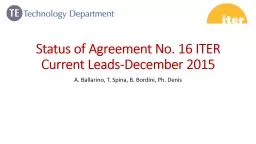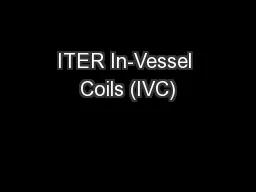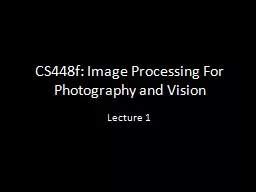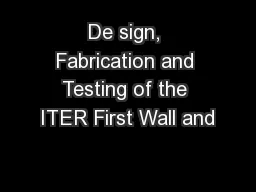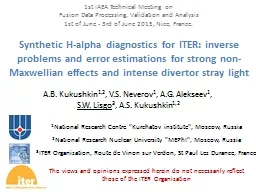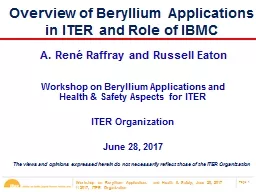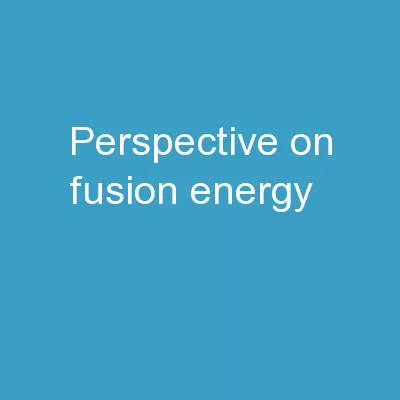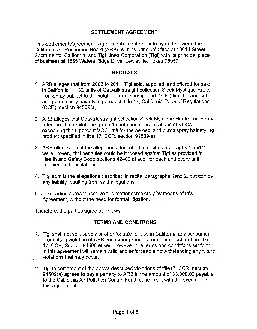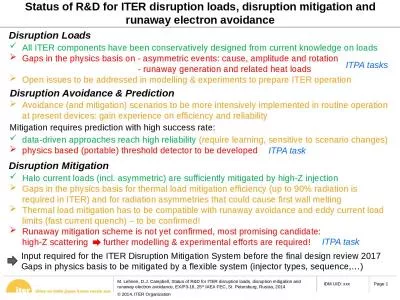PPT-Status of activities Agreement No. 16 ITER Current Leads
Author : haroublo | Published Date : 2020-06-29
T Spina A Ballarino January June 2016 OUTLINE MAIN TASKS ACHIEVED DURING 6 MONTHS JANUARY 2016 JUNE 2016 OTHER ACTIVITIES PLAN FOR THE FUTURE DOCUMENTATION 04072016
Presentation Embed Code
Download Presentation
Download Presentation The PPT/PDF document "Status of activities Agreement No. 16 I..." is the property of its rightful owner. Permission is granted to download and print the materials on this website for personal, non-commercial use only, and to display it on your personal computer provided you do not modify the materials and that you retain all copyright notices contained in the materials. By downloading content from our website, you accept the terms of this agreement.
Status of activities Agreement No. 16 ITER Current Leads: Transcript
Download Rules Of Document
"Status of activities Agreement No. 16 ITER Current Leads"The content belongs to its owner. You may download and print it for personal use, without modification, and keep all copyright notices. By downloading, you agree to these terms.
Related Documents

